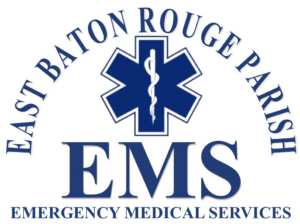Sponsored by East Baton Rouge Parish EMS
As temperatures rise, so do the 911 calls for heat-related emergencies. When a patient is suffering from heat exhaustion, an East Baton Rouge Parish medic’s top priority is to rapidly cool the patient down before irreparable damage is done to the body. Last year alone, EBR EMS responded to 180 heat emergencies.
Learn more about the types of heat emergencies and how to protect yourself and others. If you find yourself in an emergency and need help, EMS’ ambulances are always stocked with supplies of IV fluids and cooling packs, and the air conditioning system is always on, even when the truck is not running.
Three types of heat-related emergencies
Heat cramps: Consist of muscle cramping and heavy sweating.
What to do: Stop strenuous activity, drink water and sports drinks, massage and stretch muscles.
Heat exhaustion: Consists of headache, dizziness, nausea and vomiting.
What to do: Stop strenuous activity and get to a shaded or cooler location. Loosen restrictive clothing and use active cooling techniques such as pouring cool water on the patient and fanning them. If they can tolerate drinking water or sports drinks, allow them to do so, but be aware of abdominal cramping and nausea. Don’t force someone to drink if they cannot do so on their own.
Heat stroke: Occurs when the body can no longer control its temperature. The body is unable to produce sweat, the person may be confused, have slurred speech, begin seizing and ultimately become unresponsive. This is a life-threatening emergency.
What to do: Call 911 – stay on the phone and follow instructions as provided. Quickly cool the person off by immersing them in cool water. If possible, place ice packs under the armpits, groin area and sides of the neck. Continue to cool the patient and monitor them until EMS arrives. Do not force water into an unresponsive person’s mouth!
Tips for acclimating to summer heat
Employees working outside need to take extra precautions during the summer months. Planning ahead can prevent a heat-related emergency from ever occurring.
- Pre-hydrate with water prior to working in the heat. Avoid alcohol and caffeinated drinks.
- While working in the heat, workers should consume one cup of water every 20 minutes to replenish the sweat their bodies are producing.
- Use the buddy system, and have co-workers check on each other throughout the job.
- Pre-stage shaded areas and access to water prior to the job.
- Schedule and encourage frequent rest and water breaks.
- If possible, employees should wear light and breathable clothing. Be aware that protective clothing or equipment may increase the risks of heat stress.
More information about EBR EMS can be found online at brla.gov/EMS.
 GET DAILY REPORT FREE
GET DAILY REPORT FREE




